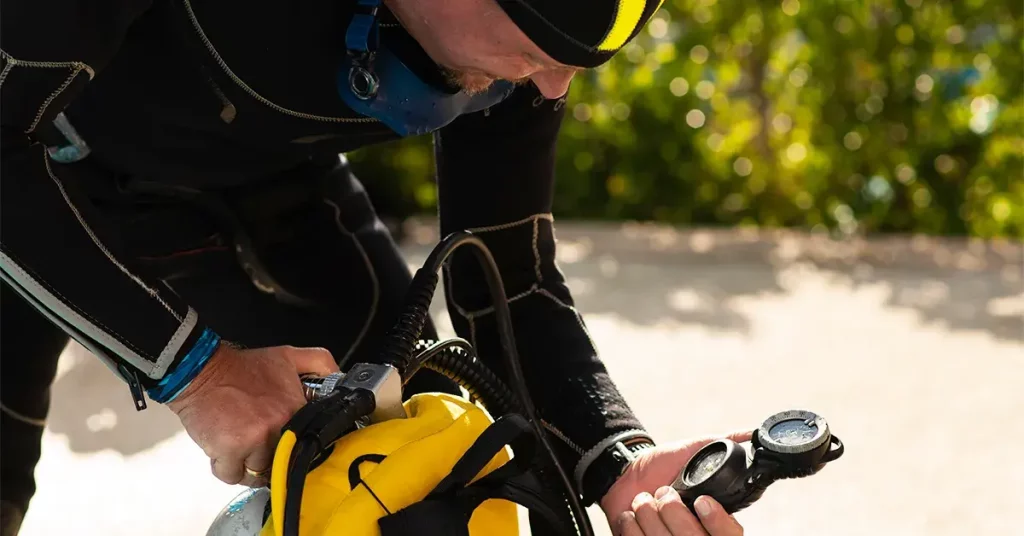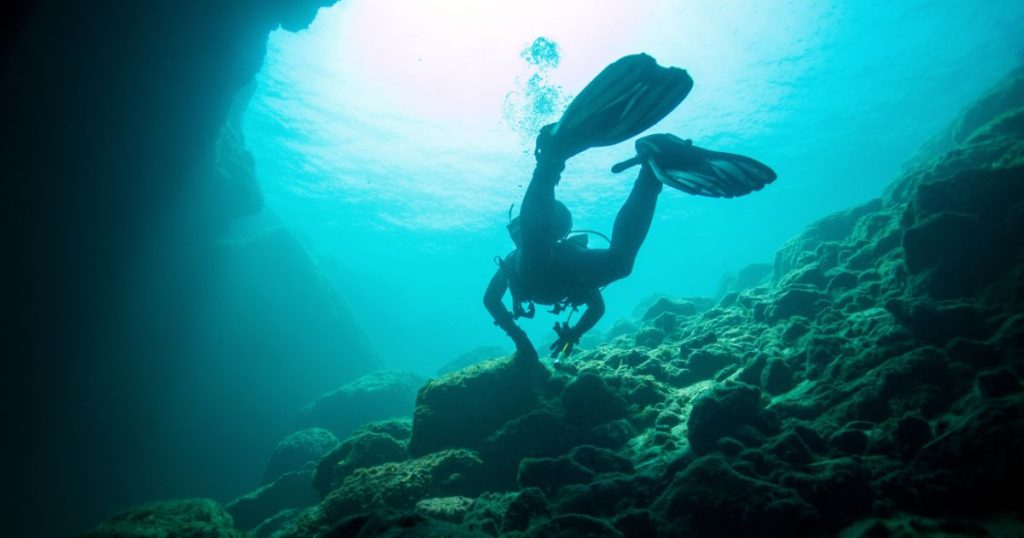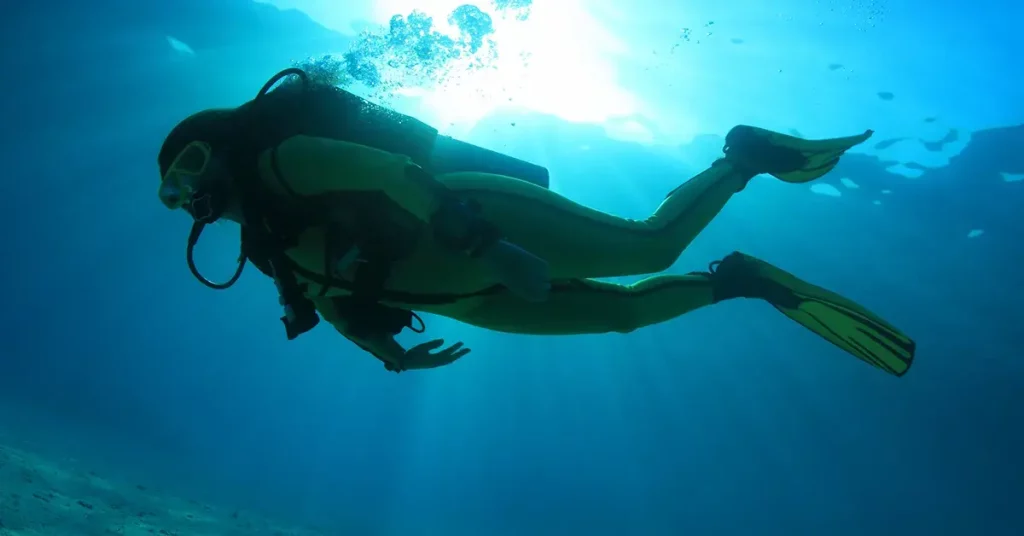As a diver – one of the smartest questions you can ask yourself is “What should divers do for their own safety?”
Diving is an incredible sport. It offers unlimited potential for underwater exploration, but without proper preparation, it can be extremely dangerous – even deadly. Safety should always be your first, second and third priority whenever you dive.
Diving safely means being aware of the potential dangers and having a plan in case anything goes wrong. It’s always better to be safe than sorry!
The old military mantra “Proper preparation prevents poor performance” applies very nicely to dive safety.
This article will explain the basics of safety for divers, as well as try to answer some of the most commonly asked questions about diving safely.
Planning Out Your Dive
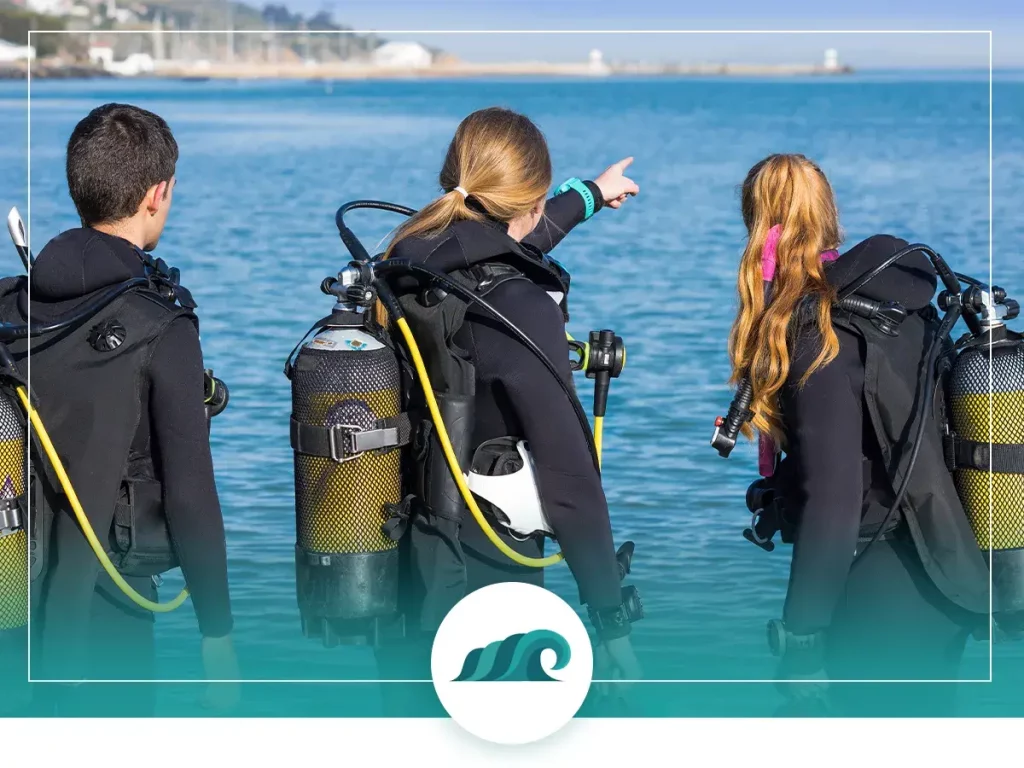
The first step of every well-executed dive is a well thought out dive plan. No matter how experienced a diver you are, planning out the details of each dive before you enter the water is crucial.
Together with your dive buddy, plan out the route – as well as any possible alternatives. Agree in advance on the maximum time and depth for the dive, and make sure everyone is aware of the emergency procedures for diver separation or out-of-gas situations. This is especially important if you’ll be diving without a knowledgeable guide.
Coordinating your hand signals with your dive buddy is another good idea. If you’re diving with someone new, confusion can easily arise as hand signals differ from region to region.
Before you head out, test your gear to make sure everything is working properly. This is best done on dry land before you hop in a boat, as it can be tough to do on a rocky boat deck. Also be sure to check the local weather, tide and current forecast on a site like windguru or windfinder. Have your emergency plan in place – know the local emergency numbers, have your medical and insurance cards handy, and write down your emergency contact information.
Remember – Proper planning is important, but even more important is sticking to the plan! Changing the plan mid-dive is a poor idea and could lead to major problems. Also, never do anything you’re not comfortable with or you believe is beyond your skill level.
All this might seem like overkill – but a good pre-dive safety ritual can be the difference between a fun day in the water and disaster. It’s like that famous quote by Aristotle “We are what we repeatedly do; excellence, then, is not an act but a habit.”
What Are the Main Dangers of Scuba Diving?
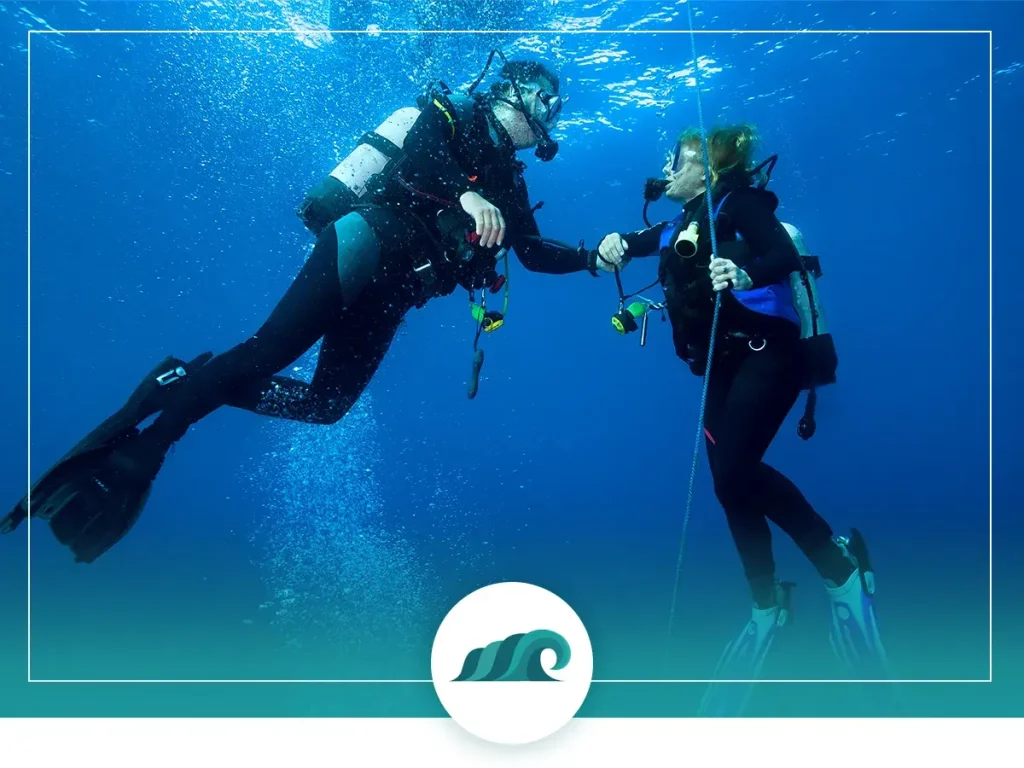
The main dangers involved in diving are decompression sickness (“the bends”) and arterial gas embolism. These two conditions are closely linked, with embolism being a more serious and acute form of decompression illness.
Both are caused when nitrogen gas trapped inside the diver’s body expands and damages tissues. This happens when a diver ascends too rapidly, or when they don’t breathe properly during the ascent.
Decompression sickness happens when bubbles form inside a diver’s tissues and bloodstream.
The symptoms can include:
- Joint pains and aches – mostly in larger joints like shoulders, hips, knees, and ankles
- Tingling and numbness
- Confusion and memory loss
- Muscular weakness
- Loss of balance, dizziness, and vertigo
The condition can vary from being rather mild to serious. In serious cases, the treatment involves oxygen first aid followed by recompression in a hyperbaric chamber.
An arterial gas embolism occurs when the compressed air trapped inside a diver’s lungs cannot escape during an ascent. This is typically caused by a rapid ascent and holding one’s breath during the ascent. The gas inside the lungs expands and ruptures lung tissues – which releases gas into the arteries.
Some of the common symptoms are:
- Loss of consciousness
- Dizziness and disorientation
- Irregular breathing and chest pain
- Wheezing
- Coughing blood
This is a serious emergency and requires immediate medical attention.
When you scuba dive, nitrogen gas is absorbed by your body’s tissues while under pressure. As long as you ascend at the correct pace – the gas will decompress and not cause any harm. Dive tables and dive computers are used to calculate the maximum duration and depth you can dive to safely.
It’s important to note that incidences of decompression sickness and pulmonary embolism are rare occurrences nowadays. With proper planning and safety procedures, the risks are minimal. DAN (Divers Alert Network) reported that in a study of 50,150 dives, just 28 recompressions were required. This corresponds to a rate of 0.05% of dives.
Other Diving Dangers
Running out of Breathing Gas
Running out of breathing gas was the most common trigger in diving fatalities according to a recent study by DAN.
Air-supply management is an important part of planning any dive. Many divers apply the ‘rule of thirds’ to ensure they have enough air in case of malfunctions or unforeseen circumstances. This means one-third of the air supply is allotted for the descent and dive, one third for the ascent, and the last third is saved as an emergency reserve.
Equipment Problems
The main issues divers run into with their equipment are from improper usage. Using new equipment without testing it in advance, poor maintenance and incorrect configuration can be extremely dangerous. That’s why testing your gear and completing pre-dive safety checks is so crucial.
Nitrogen Narcosis
Nitrogen narcosis is an altered state of consciousness that occurs when breathing in high concentrations of nitrogen gas. The sensation is similar to a pleasant alcohol buzz. It typically only occurs at depths beyond 100 feet (30 meters), which is deeper than most recreational divers will go.
While not dangerous by itself – the sensation is temporary and subsides after you ascend to a shallower depth – nitrogen narcosis can impair your judgment and cause irrational behavior. Having a dive buddy nearby to spot the signs of narcosis is key for safe diving.
Entrapment
Entrapment occurs when a diver becomes stuck or entangled in an area without direct access to the surface. This can occur during cave, wreck or under-ice diving.
Proper training and dive preparation – as well as carrying a sharp dive knife – will greatly reduce the risks of entanglement or entrapment.
Dive Buddy
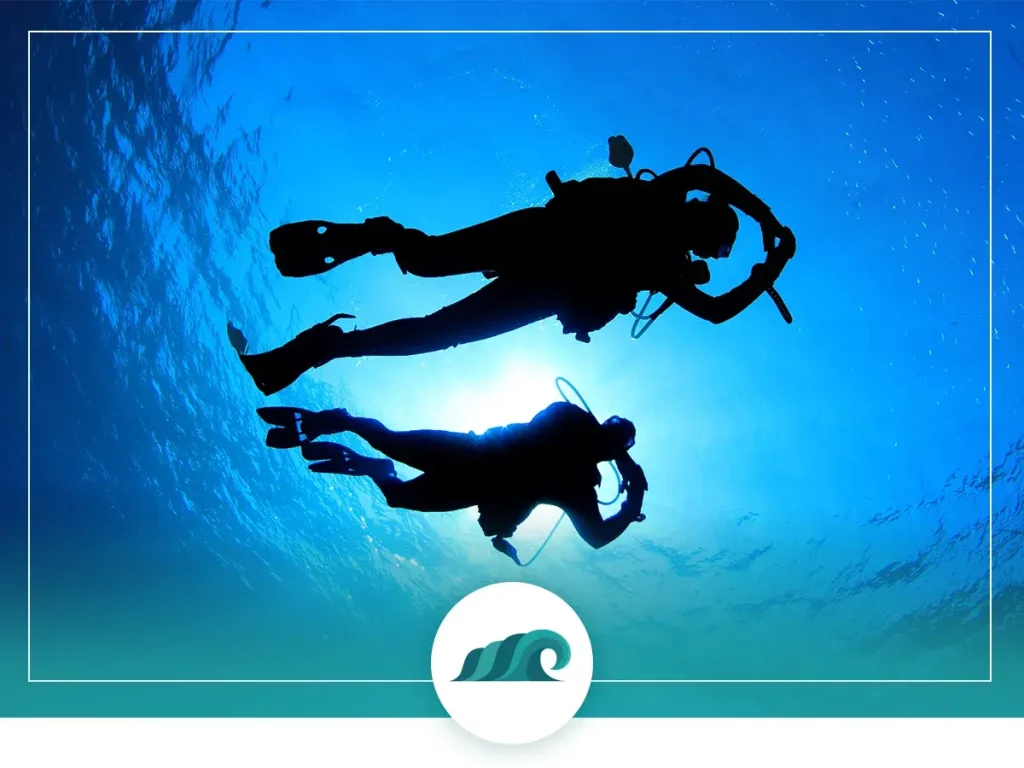
Diving with a buddy might be the most important safety tip for divers. The buddy system greatly reduces your risk of equipment failure, entanglement or entrapment, running out of breathing gas and other dangers. Always make sure you communicate with your dive buddy before the dive, you should be comfortable knowing they’ve got your back.
Your buddy is your lifeline in case you run into trouble, and you are theirs. Always stay close to your dive buddy and don’t lose visual contact with them.
In cases of diver fatalities, 86 percent of scuba divers were alone when they died. This means they either dived solo or became separated from their buddy at some point during the dive. The old diving maxim “Dive alone – die alone” still rings true.
Dive Flag
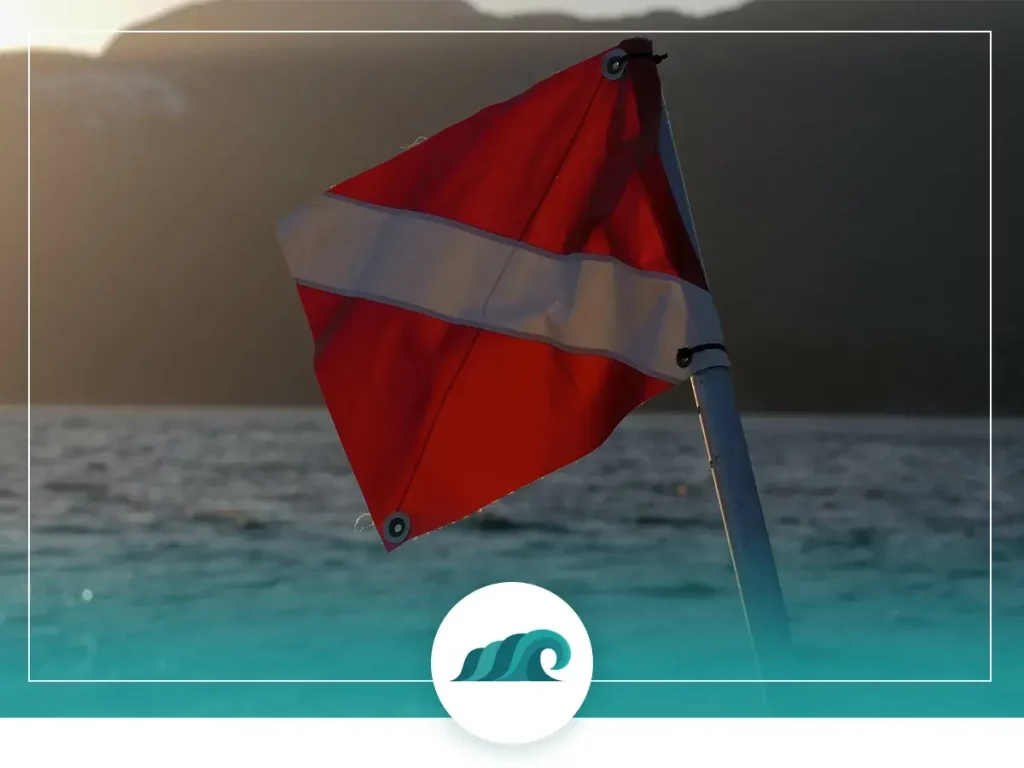
Anytime you’re on the water it’s important to take every safety precaution.
Clearly displaying a diver down flag is not only smart, but it’s also usually the law! The flag is a clear sign to other boats in the area to slow down and steer clear of the area around your flag.
There are two styles of diver down flag – in North America, the flag is a red square with a diagonal white stripe across – Internationally the flag is white and blue and known as the alfa/alpha flag.
When you’re diving, try to stay close to the flag. It’s far more visible to passing boats than a diver’s head and shoulders.
Boating and Divers Safety
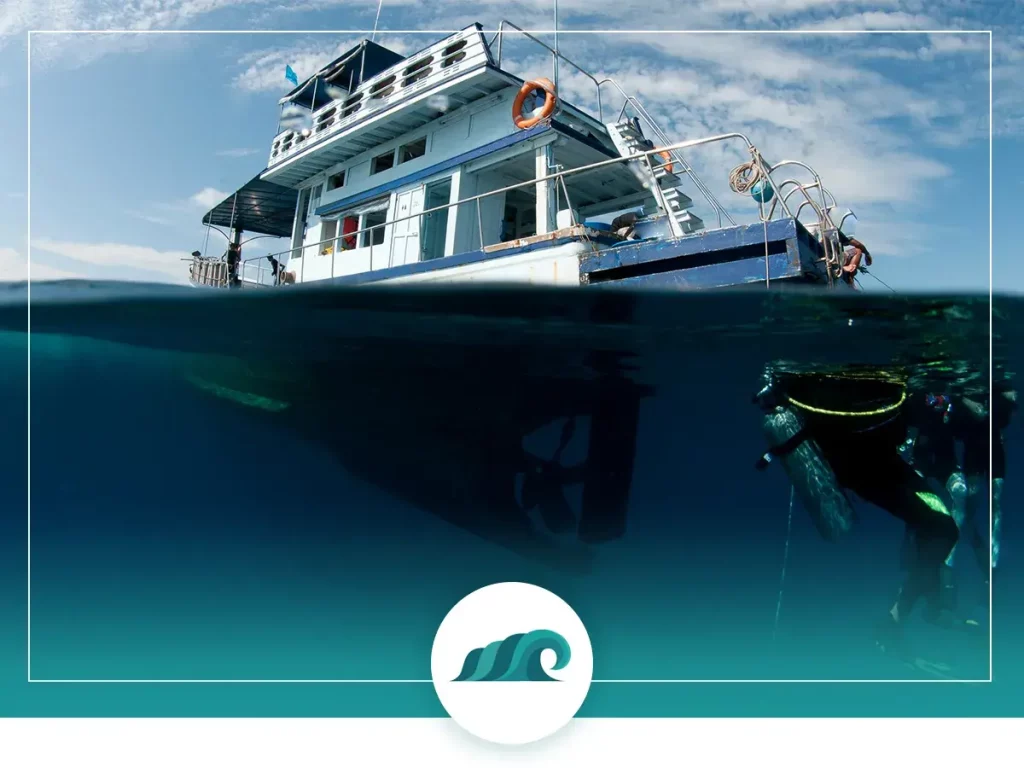
Whenever you’re diving in an open area with boat traffic it’s important to be aware of your surroundings. The same goes when you’re piloting a boat, being aware of your environment and local laws and regulations ensure everyone will have a great time.
Whenever you head out on a boating trip it’s a good idea to fill out a float plan and leave it with a friend, family member or local marina. A float plan outlines the trip and provides basic information on where and when you plan on boating. If you happen to run into trouble, a float plan makes it easy for local authorities to locate you and provide assistance.
A float plan should contain the following:
- Vessel owner’s name, phone number, address, and emergency contact info
- Description of the boat, including name, license number, color, engine type, and distinguishing features
- Trip details, departure and arrival times and locations, planned route and any alternates
- Number of people on board
- Information about safety equipment onboard – including signaling devices and radio channels
When you’re piloting a boat in an area with divers, keep an eye out for the diver down flag, and stay at least 100 feet away (300 feet in open ocean). Never drive between the diver down flag and a nearby shore.
Dropping anchor near a diver down flag should be avoided – you don’t want the anchor to hit anybody below the surface! Also, be on the lookout for air bubbles on the surface – which indicate a diver is surfacing.
As a diver you should:
- Make sure to always display the diver down flag
- Use a stable boat suited for the conditions
- Don’t overload the vessel with too much weight and equipment
- Use the buddy system – avoid diving alone
Fitness

Are you fit enough to dive?
While diving might not appear that physically demanding, especially if you’re diving in calm tropical waters, situations can arise that require high levels of physical stamina and strength. Strong currents, rough weather, and rescue situations all require you to have a good baseline of fitness and swimming ability.
Poor fitness can cause you to overexert yourself and consume more breathing gas that a fit person would normally use. This translates to less time enjoying yourself underwater!
If you’re not confident about your fitness level, swim training is an excellent way to build up leg strength, cardiovascular fitness and efficiency in the water. This article by competitive swimmer and Olympian Gary Hall Sr. explains the best ways to train for scuba diving. He suggests focusing on your legs, training with your fins on, strength training in the gym and dry-land core strengthening.
Cutting out tobacco and excessive alcohol consumption is another great way to improve your lung capacity and overall fitness. Not only will it improve your diving, but your body will thank you!
Have You Done All the Pre-Dive Safety Checks?
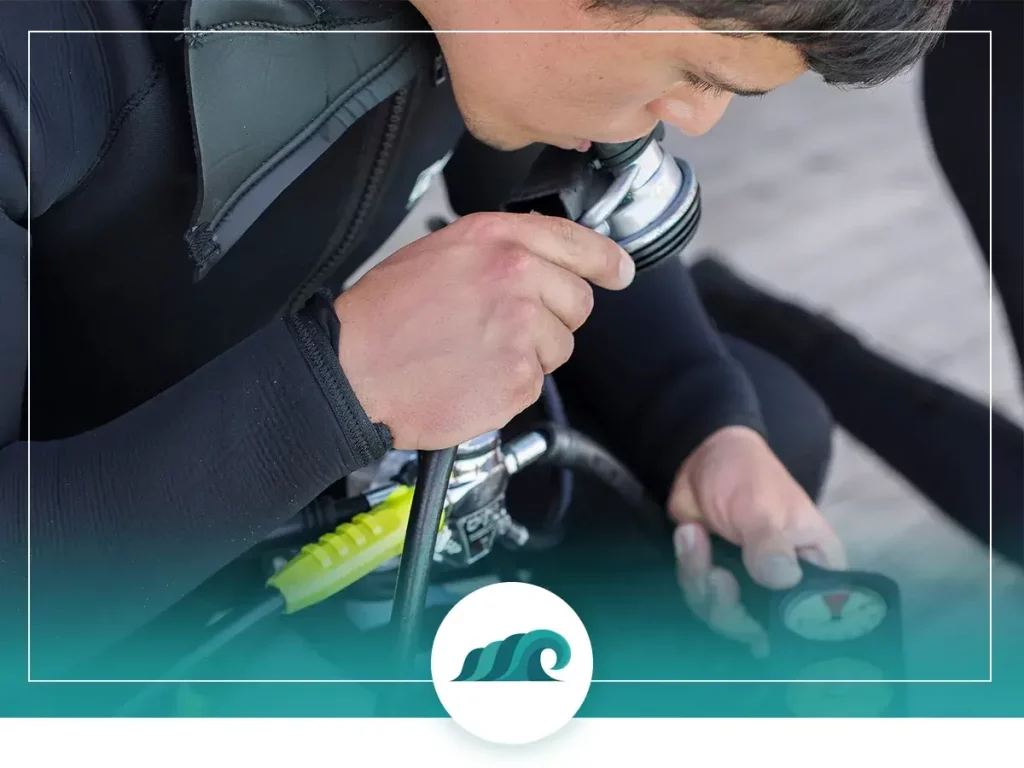
Checking all your gear before you dive in is a crucial part of diving safely. As mentioned previously, the vast majority of problems divers encounter with gear are not malfunctions, but user error and incorrect equipment configuration.
Performing a thorough pre-dive safety check ensures all your gear is working correctly. If you’ve just purchased new gear, or haven’t used yours in a while, test it out in a pool beforehand. Look for any leaks of bubbles coming from your BCD (buoyancy control device).
Also if you’re using rental gear – make sure to familiarize yourself with the weight belt emergency release and BCD dump valves.
The largest diving training organization PADI (Professional Association of Diving Instructors) recommends divers use their pre-dive checklist acronym “BWRAF” for buddy check procedures.
BWRAF Checklist Steps:
1) B – BCD: The first item to check is the BCD. Inflate and deflate your buddy’s BCD, and check the release and dump valves.
2) W – Weights: Make sure your buddy’s weight belt is secure. Check the quick release to ensure it won’t get snagged on anything.
3) R – Releases: Check the various releases on your buddy’s gear (BCD, tank, dive lights and other gear). All the straps should be flat and tightened. Make sure you know how to quickly release their gear in case of an emergency.
4) A – Air: Check the breathing gas next. Make sure the tank is full. Take a few breaths from your buddy’s regulator. Check both the main tank and the alternate air supply.
5) F – Final Check: Do a final head to toe inspection of your buddy. Make sure their mask and fins are on and check to see if anything looks out of place.
Many divers come up with their own acronyms to remember all the steps in the buddy check. Some of the funnier ones include:
- Because We Really Aren’t Fish
- Big White Rabbits Are Fluffy
- Bruce Willis Ruins All Films
- Bangkok Women Really Are Fellas
However you remember it, completing a thorough pre-dive safety check ensures you’ll have a great day in the water. Now the next time someone asks “What should divers do for their own safety?” you’ll be well prepared to answer them.

